Articles of 2007
The Fight: Hagler-Hearns, Caesars Palace, Las Vegas, April 15, 1985
Nearly a quarter century later it remains a high point of boxing in the latter half of the twentieth century. Some knowledgeable experts have described it as the greatest fight in boxing history – which it probably wasn’t, if only due to its brevity. But its ferocious first round, which to this day remains the standard against which all others are measured, was undoubtedly the most exciting in middleweight annals, and one of the two or three best opening stanzas of all time.
What did Bob Arum know that the rest of us did not? Already in the midst of an age in which it had already become obligatory to sell every big fight – and many smaller ones – with a catchy slogan, the promoter who had already staged (with Don King) the Thrilla in Manila, as well as served as the impresario for Evel Knievel’s ill-fated attempt to jump the Snake River Canyon, christened the 1985 matchup between Marvelous Marvin Hagler and Thomas Hearns simply “The Fight.”
Events proved Arum prescient. It was, indeed, The Fight.
Although its official buildup consumed several months beginning in late 1984, The Fight had been at least three years in the making. In 1982, with Ray Leonard vacillating toward retirement and Roberto Duran still tainted by the disgrace of his ‘No Mas’ performance in New Orleans, Hagler and Hearns were the two premier boxers in the game, and a showdown seemed inevitable.
In early 1982 Arum, Hagler’s lawyer Steve Wainwright, and Emanuel Steward had entered into a unique three-fight contract pitting Hagler against a trio of middleweights from Detroit’s Kronk Gymnasium.
Under the terms of the arrangement, the middleweight champion would fight, in order, Mickey Goodwin, William (Caveman) Lee, and, in the grand finale of the trilogy, Thomas Hearns. Round one, the Goodwin bout was to take place that March in Italy, with Rodolfo Sabbatini, Arum’s silent partner in the middleweight sweepstakes, serving as the co-promoter.
Preparations had been made when Goodwin broke his hand in training. Lee, considered a less worthy challenger, was rushed into the breech, and the fight was moved from San Remo to Atlantic City, where Hagler required barely a minute to send Lee back to his cave.
With Goodwin still indisposed, the decision was taken to go straight to the Hearns fight, which was scheduled for May 24, 1982, in Windsor, Ontario, just across the river from Detroit. The posters were printed, as were the tickets, but the fight didn’t happen.
The unraveling of the Windsor fight remains shrouded in mystery. The only way to make the fighters’ promised nut was to sell the fight on closed-circuit, but HBO, which had a multi-fight contract with Hagler through Top Rank, believed it had the right of first refusal and threatened to sue. (In what seemed a transparent attempt to stage an end-run around HBO, the Windsor card was to be promoted not by Top Rank, but by a new company called “Bob Arum Enterprises.”)
The lawyers were poised to have a field day, but the billable hours were somewhat curtailed after it was reported, conveniently, that Hearns had broken the pinky finger on his right hand.
“A day after the injury to Hearns, a federal judge ruled in Los Angeles ruled in HBO’s favor,” recalled Arum. “We would have appealed if Tommy hadn’t been hurt, but it would have dragged on for some time and the fight would have been in jeopardy.”
Hagler-Hearns was off, in any case,, and would not be revived for nearly three years. Hagler went to Italy later that year and disposed of both Arum’s obligation to Sabbatini and the unfortunate Fulgencio Obelmejias in the same evening.
Over the next three years Hagler would defend his undisputed middleweight championship against Tony Sibson, Wilford Scypion, Roberto Duran, Juan Domingo Roldan, and Mustafa Hamsho, while Hearns would fight Murray Sutherland (in a non-title fight) before defending his junior middle title against Luigi Minchillo, Duran, and Fred Hutchings.
Leonard, who had teased Hagler before announcing his retirement in 1982, re-emerged in 1984 and pointedly scheduled his comeback fight against a left-hander in New England. In Worcester, journeyman Kevin Howard knocked Leonard down before he himself was stopped in nine. Leonard immediately re-retired, once again putting Hagler and Hearns on a collision course with one another.
But by the time they were scheduled to meet again, the price of poker had gone up. A guaranteed $10.5 million minimum now sat in the pot.
Bob Arum was once again the sole promoter. Although Top Rank had staged Hagler’s last 17 fights, Hearns had slipped away with the expiration of the earlier three-fight agreement. Shelly Saltman, Arum’s old cohort from the Snake River Canyon jump, had moved in on the Hit Man for Hearns-Duran a year earlier.
(Although Saltman had the paper on Hearns, the Duran fight was bankrolled by Los Angeles entrepreneur Steve Taub. Taub, who years later would enter Imperialism in the 2004 Triple Crown races, recalled Hearns-Duran as “the most expensive six minutes of my life.”)
The Hearns-Saltman arrangement had ended unhappily, but not as unhappily as Saltman and Knievel parted ways. Incensed by what Saltman wrote about him in a subsequent book, the motorcyclist vented his displeasure with an aluminum baseball bat and broke Shelly’s left arm and wrist in several places.
Saltman won a $13 million judgment after the attack, but was unable to collect because Knievel declared bankruptcy. Associated Press scribe Fast Eddie Schuyler thought Evel Knievel should have been presented with the Silver Slugger Award.
The Fight was announced in December of 1984 at New York’s Waldorf-Astoria. Hagler and Hearns were all smiles, looking more like co-conspirators than adversaries, probably because they shared the knowledge that each would earn in excess of $5 million from their joint enterprise.
In January and February Hagler, Hearns, and Arum embarked on what its participants would recall as the ‘Magical Mystery Tour.’ Designed to beat the drums for the closed-circuit sale, the itinerary called for the boxers to visit 22 cities in the space of just two weeks. The prospective combatants traveled in separate corporate jets, only to reconvene at the next stop.
Caesars owned one jet, a state-of-the-art Gulfstream G-II with its own Pac-Man machine. Arum leased a second jet, a Falcon, which was slightly less luxurious and a bit slower. The plan called for Hagler to fly on the Gulfstream when the parties were flying west. Once they reached Las Vegas they would switch planes.
“But when we got to Vegas, (Hagler co-handlers) Pat and Goody Petronelli called to tell me we had a problem,” recalled Arum. “Hagler said he was going home if he didn’t get to stay on the G-II. He refused to continue the tour if he had to fly on the Falcon.
“I tried to explain this to Emanuel Steward, but then Tommy had a shit-fit,” said Arum. “He said he was going home if he didn’t get to fly in the Caesars plane.”
In the end, Arum had to turn the second plane in and lease another G-II, identical to the first, so that the boxers could have separate-but-equal modes of transportation for the remainder of the tour.
Neither man was exactly a polished public speaker, but Hearns, along with the rest of the Kronk boxing team, had been the beneficiary of locution lessons administered by Steward’s resident schoolmarm Jackie Kallen. He would thoughtfully digest questions and then invariably begin his answer with “Well, basically…”
“I think,” supposed Boston Globe scribe Leigh Montville, “Jackie Kallen must have told him ‘Tommy, every time you want to say ‘motherf—–,’ stop yourself. Then instead say ‘well, basically…’
Hearns did best to sell The Fight on this whistle-stop tour, but seemingly every time he opened his mouth he managed to rankle Hagler with what Marvin perceived to be evidence of disrespect. Hagler always deliberately tried to psych himself up for fights by convincing himself that he disliked his opponents, and the Hit Man played right into his hands. Every turn of phrase meant to boost the closed-circuit sale seemed to further antagonize Hagler.
Steward confirms that Hearns did an inordinate amount of trash-talking, “but it was strictly business.
“People don’t realize how out of character it was for Tommy to do that,” said the Hall of Fame trainer.
All it did was make Marvin Hagler mad.
“That tour did me good,” said Hagler once it was over. “I might have had some respect for Tommy Hearns before I spent all that time with him, but by the time we got done I came away hating his ass. I respect him as a boxer but I don’t respect him as a person. I’m going to remind him what it’s like to be on the bottom and have to work back up again.”
”He’s on an ego trip, especially after knocking out Duran the way he did after watching me (go the distance) with Duran,” groused Marvelous Marvin. “Well, he should have fought the winner of that fight, not the loser, ‘cause he didn’t prove anything. This is the best time for me to get him now, while he’s still walking around on that cloud. I’m going to do to him what I did to Alan Minter. He had that same kind of attitude, remember?”
In retrospect, that was eerily prophetic, at least when it came to the duration of The Fight. When Hagler won the title from Minter in London five years earlier, the slugfest had ended at 1:45 of the third round. The Hearns fight would last but a few seconds longer.
Hagler and Hearns were supposed to have one more face-to-face encounter after the tour ended. On the last day of February, the boxers were summoned to New York, where Sports Illustrated would shoot the cover picture for its fight-week issue. Hagler and Hearns had also agreed to participate in the filming of the video for Van Zant’s upcoming release “The Fighter.”
Hagler was still battling the lingering effects of a cold he had caught on the tour, and telephoned his regrets on the morning of the photo shoot. Hearns was in Los Angeles, where he had attended the Grammy Awards ceremonies and received a “Fighter of the Year” award at a WBC dinner.
Unaware of Hagler’s withdrawal, Hearns boarded a flight for New York, but the United 767 developed mechanical problems and had to return to the gate, where it remained for the next two hours. When it finally did take off, one of the plane’s two engines caught fire, forcing an emergency landing in Salt Lake City.
“It could have been,” said Arum, “the ultimate Sports Illustrated jinx.”
The magazine could wait, but in New York, Van Zant had leased Gleason’s Gym for the day. The band went ahead with the video, subbing with a pair of New York fighters, Kevin Moley and Alberto Ramos. (Footage shot of Hagler in Provincetown earlier was later spliced in.)
Hearns had intended to fly from New York to Europe to work with his Kronk teammate Milton McCrory, who was defending his WBC welterweight title against Pedro Vilella in Paris, but, said SI boxing editor Ted Beitchman, “Tommy is so shook up right now he may never get on a plane again. They may have to move The Fight to Salt Lake City.”
The initial plan had called for Marvin to begin training in Provincetown on Cape Cod, as he had for each of his previous 25 fights, before moving on to Palm Springs in mid-March, but the champion was nursing such a bad a cold that Goody Petronelli convinced him to proceed straight to the California desert, where the Americana Hotel had already offered the champion carte blanche and the run of the premises.
In Palm Springs Hagler sparred with Boogaloo Watts and Jerry Holly, both tall and rangy like Hearns.
The Petronellis had also lined up Marcos Geraldo, who had fought both Hearns and Hagler, but when Marcos failed to show up he was replaced by Larry Davis, who didn’t last long. Larry fell by the wayside after Marvin busted his eardrum with a left to the head one day in Palm Springs.
Watts, once ranked the No. 2 middleweight in the world, had been the first man to defeat Hagler when he captured a hometown majority decision in Philadelphia nine years earlier. The controversial loss had been subsequently avenged, and Watts eventually emerged as a loyal and respected member of the Hagler camp. Two years earlier he, along with fellow Philadelphian Buster Drayton, had traveled to Italy to spar with Hagler before Obelmejias II in San Remo.
“Bobby might have been a champion himself if I hadn’t been there,” said Hagler of Watts. “He’s smart. He knows who I’m fighting. He’ll lay against the ropes, throw overhand rights and hooks to the body, fight in spurts, do all the things Hearns is likely to do.
“And the other kid (Holly), watch him. He’s a younger, taller, bigger version of Thomas Hearns, plus he’s got something Tommy don’t have. He’s got guts.”
I didn’t think for a moment Marvin actually believed that assessment of Hearns’ mettle, but the events of April 15 would surely prove him wrong.
The challenge to Hagler had forced a radical departure in Hearns’ traditional training modus operandus. Steward’s Kronk fighters normally sparred against one another, without regard to weight class, and there was such an abundance of talent in the Detroit gym that they usually got all they wanted and more.
“You can’t get any better boxing than we give them in our own gym, but except for Milton (McCrory), who can switch up, we just don’t have any southpaws,” explained Kronk assistant trainer Prentiss Byrd.
Steward imported a trio of lefthanders – middleweights Cecil Pettigrew of Tulsa and Brian Muller (Guyana), along with Kansas City light-heavyweight Charles (Hollywood) Henderson – to prep Hearns for The Fight.
Although he’d faced a few lefties in his amateur days, only one of Hearns’ 41 professional appearances had been a southpaw, the immortal Saensak Muangsurin of Thailand.
Muangsurin, said Byrd, “was a former world champion and all, but he still wasn’t no Marvin Hagler.”
Hearns’ crash-course in lefthandedness also had to take into account the fact that Hager, the best switch-hitter since Mickey Mantle, could, and almost certainly would, switch over to orthodox at moments not even the champion could predict.
“It just kind of takes over, depending on how the fight is going,” Hagler explained. “I don’t even think about it. It just happens.”
One afternoon in Palm Springs, the Brothers Petronelli had accompanied Hagler on a brisk walk around the adjacent golf course when they came upon a small grove of citrus trees. A child of the city streets, Marvin couldn’t resist.
“I mean, I guess if I’d ever thought about it, I knew oranges grew on trees, but here was all this fresh fruit that nobody had ever touched before,” recalled Hagler. “Pat was saying ‘Naw, come on, Stuff, you’re not gonna do it,’ but I said ‘Just watch!’”
The middleweight champion of the world was in short order up the tree and filling a sack with purloined fruit. At that moment a golf cart came puttering along and emerged from the bushes. One of the occupants was Palm Springs’ most famous resident.
“I’d met Bob Hope once before, but he couldn’t believe this,” said Hagler. “Bob says ‘Marvin, what you doin’ up there?’ and I said ‘Hey, I’m picking me some oranges, Bob. That all right?’
“Next thing you know he invited me and Pat and Goody over to his house.”
With the fight still a month away, Kirk Douglas also became a frequent visitor to the tent outside the Americana Canyon that served as Hagler’s training camp.
Although it was widely assumed that Douglas was, like Hope, himself a reformed boxer, Old Spartacus revealed that while he had been a college wrestler at St. Lawrence, prior to his 1949 role in Champion, “I didn’t know the first thing about boxing.”
Douglas told me had been tutored for that role by the old welterweight Mushy Callahan. Mushy must have done a great job, because Douglas was not only nominated for an Academy Award, he was convincing enough that for the rest of his life people sought his opinion on pugilistic matters.
He spent a lot of time watching Hagler, but when it came to picking the fight, Douglas was, like a lot of other people, squarely on the fence.
“They’re both such marvelous boxers that it’s difficult to pick a winner,” said the actor. “If there’s an edge it’s that one guy is moving up in weight class, and you don’t know about that. But one thing’s for certain: There’s going to be an awful lot of talent in the ring on April 15.”
Despite the seemingly constant presence of celebrities, Hagler was all business in the training ring.
“I’m not here to sign no autographs or make appearances,” he said. “In fact, I’ve heard people comment that I’m the hardest worker of any of the champions who’ve ever trained at this place.”
Still, the surroundings in California were absolutely opulent compared to the Spartan nature of his familiar digs in Provincetown. Better still, from Hagler’s standpoint, it was free.
“This didn’t just happen overnight, you know,” he told me one day. “It took me a long time to gain this kind of prestige. I think back to years ago, with me and Pat and Goody sharing one $15 hotel room. This is the way it should be for a champion. It’s finally happening to me, but, yeah, I feel like it’s something I’ve earned.
“I’m still me,” he added, “but I’m not ready to let all of this go.”
Hagler shared the training ring with Donald Curry, who would defend his WBA welterweight title against James (Hard Rock) Green in Dallas two weeks before Hagler-Hearns. Mark Gastineau, the New York Jets’ sack specialist, had set up something called “Mark Gastineau’s Intensive Training Camp,” at which he pumped iron for the edification of the hotel guests in another part of the tent.
With the fight still nearly a month away, Hagler spent much of his time in seclusion, thinking about Hearns.
“Tommy is a dangerous opponent, and he’s going to test me, but I know deep down in my soul that this man cannot whip me,” said Marvin.
Hagler attributed Hearns’ self-assured demeanor to “false courage.”
“The thing is, see, I’ve been shook up but I’ve never been hurt. Tony Sibson shook me up with a left hook that I still remember. Even Juan Roldan hit me with a couple of good shots, but that’s where the conditioning pays off. I’ve been able to absorb those kind of shots,” reflected Hagler. “But Hearns has been stopped and I ain’t been stopped. I know he can go, but he don’t know if I can go. That’s what’s going to be worrying him.”
Hearns was attempting to become just the second 154-pound champion to win a 160-pound title (Nino Benvenuti had been the first), and going into The Fight, the Hit Man’s credentials as a full-blown middleweight were regarded as questionable.
Hearns had fought five times as a middleweight. Three of the opponents – Mike Colbert, Ernie Singletary, and Murray Sutherland – had gone the distance, and Jeff McCracken had still been on his feet when his fight against Hearns was stopped in the eighth. Hearns had dispatched Marcos Geraldo, but it was so obvious the Mexican was in the tank (the ‘knockout’ punch hit him in the shoulder) that even Emanuel Steward termed the fight “an embarrassment.”
“We were actually looking to get Tommy some work in that fight, but this guy (Geraldo) had obviously decided that he didn’t want no part of it coming in. All it did was make the TV people mad at us.”
Hearns had packed a killer knockout punch as a welterweight, but the jury was still out at the heavier weight.
“Usually a guy moving up in weight loses some of his punching power,” said Goody Petronelli. “I don’t think I’m giving away any secrets by saying Hearns has had that trouble, too.”
Although the WBC had cut its championship distance from 15 to 12 rounds two years earlier, Hagler strongly disagreed with the new regulation. His insistence on 15 rounds for his 1983 bout against Wilford Scypion had directly led to the establishment of the International Boxing Federation when Bob Lee’s new organization agreed to sanction that fight at the traditional distance. (Faced with the loss of their sanctioning fees, both the WBC and WBA had belatedly come along for the ride, making Hagler-Scypion the first championship bout ever in which all three titles were at stake.)
But Los Bandidos had grown more insistent with each fight. When Hagler’s 1984 Madison Square Garden defense against Mustafa Hamsho was slated for 15, the WBC stripped him of his middleweight title, even though Marvelous Marvin made the issue somewhat moot by dispatching the Syrian in three. Hagler took the issue to court, where a federal judge ordered Jose Suliaman to restore his championship.
Going into this fight, Suliaman opted for a new tactic: He turned the thumbscrews on Hearns, threatening to strip him of the 154-pound title he had held since 1982, when he captured a majority decision over Wilfred Benitez in New Orleans.
Officially, the WBC position was that Hearns couldn’t fight Hagler without first facing its top-rated challenger, John (The Beast) Mugabi. Unofficially, Los Bandidos let it be known that Hearns would be granted dispensation on the matter, provided Hagler-Hearns was scheduled for 12 rounds and not 15.
While publicly expressing his respect for the traditional 15-round distance, in this instance Emanuel Steward actually preferred the shorter limit, which he figured would be to his man’s advantage. (Had the Leonard-Hearns fight four years earlier ended after 12, the Hit Man would have won on the scorecards.)
The WBC’s decision to lean on Hearns, in any case, produced its desired effect. Rather than face yet another delay, which a Hearns-Mugabi fight would have entailed, the champion’s camp reluctantly acceded on the issue, and the Hearns fight became just the second of Marvin Hagler’s middleweight championship reign to be scheduled for 12 rounds.
The original panel of judges agreed upon by the WBC and the Nevada Commission had consisted of Reno’s Herb Santos, Englishman Harry Gibbs, and Rudy Ortega of Los Angeles. Pasquale Petronelli vociferously objected to Ortega, who, claimed Hagler’s co-handler, might be disposed toward favoring Hearns.
For the record, the objection rested on the grounds that Ortega’s big-fight experience had been primarily as a referee, not a judge. Privately, Ortega’s cozy relationship with the WBC and its president worried the Hagler camp, as well as his promoter.
“I don’t want to see them try to steal it from Marvin,” said Arum.
“It’s no secret that Jose Suliaman and Emanuel Steward are like cousins,” added Petronelli. “We’ve been at odds with Suliaman for years (mostly on the 15-round issue), so I’m not surprised that they’d try to pull something like this. We’re not going to sit by and let them try to railroad The Fight.”
The dispute was aired at a closed-door meeting on Thursday, and Nevada commission chairman Sig Rogich agreed to replace Ortega. (The replacement, according to Arum, was supposed to be Texan Dickie Cole, but by fight time Californian Dick Young was sitting in the third judge’s chair.)
Not for the last time, the Petronellis apparently outsmarted themselves. On the night of the fight Young, the replacement judge, scored both completed rounds for Hearns. Santos and Gibbs scored both for Hagler.
Richard Steele, nominated to be the referee, had been at the center of some controversy for his handling of the Michael Dokes-Randy Cobb fiasco a few weeks earlier. Steele was a casino executive at the Riviera up the strip (where Arum’s archrival Don King also maintained offices), but neither side objected to his presence as the third man in the ring.
“It’s not only my biggest fight, it’s the biggest fight there’s ever been,” said Steele. “Of course I’m excited, but I’m going to try to approach it no differently than if it were another ESPN undercard fight.
“What I have to keep in mind at all times is that these are two human beings I have to protect,” the referee added prophetically. “I want to make sure they can both walk out of the ring when it’s over.”
When it had been announced in December, The Fight had been posted at 13-10, with Hagler the favorite, but the punters had quickly bet it down to a 6-5 pick, and as the date approached the odds vacillated between one man and the other. Five days before the bout, a big influx of Motown money had temporarily made Hearns the favorite.
Convinced in his own mind that gambling interest had been behind his disputed 1979 draw with Vito Antuofermo, Marvin was almost phobic about betting odds, but one day he overheard me telling someone that Hearns had gotten a nose in front at the sports book that morning and was now narrowly favored.
“See,” exclaimed Marvin. “The pressure is on Thomas Hearns, not me. A lot of people are probably looking at our fights against Duran and figuring he can beat me, and I’m just hoping he’s fool enough to believe them, because he’s going to find his ass on the deck.
“I’m glad you told me that,” Marvin said with a grin. “I hope Las Vegas makes him ten to one.”
Art Manteris, the sports book director at Caesars, predicted that Hagler-Hearns would be the most-bet fight in Las Vegas history, and could approach the record set by the Super Bowl a few months earlier.
On the Thursday night before the big fight, ESPN celebrated the fifth anniversary of its Top Rank Boxing series with a card at the Showboat. Terrence Alli, who was to have fought Choo-Choo Brown, pulled out on the evening of the fight, citing illness, thus promoting the Brett Summers-Chris Calvin co-feature to main event status.
Summers, a young lightweight trained by Stewart, was unbeaten at 22-0, while Calvin, 15-3-2, was a well-traveled Nashville fireman who had battled Hagler stablemate Eddie Curet to a draw at the Boston Garden two years earlier.
Calvin, the self-proclaimed “Southern Rebel,” jumped right on Summers, pummeling him all over the ring in the first. He appeared to have won the fight in the third, when he knocked Summers down three times for what should have been an automatic stoppage, but Joey Curtis bewilderingly ruled one of the knockdowns a slip.
“Joey may be a lousy referee, but he saved the show,” Al Bernstein would say later. (Just a couple of years earlier, Curtis had suspiciously stopped Michael Dokes’ fight against Mike Weaver after just 63 seconds).
Summers was down nine times in all before Curtis stopped the fight in the tenth. The Kronk Boxing Team, which by then included at least thirty professionals, had been out in force for the Calvin-Summers fight, and they filed out of the arena disappointed in the result.
The rest of us left shuddering at the thought of what might have happened had Joey Curtis, and not Richard Steele, been assigned to work Hagler-Hearns a few nights later.
Once the principals had arrived in Vegas, Hearns had halted his sparring on Tuesday, six days before the fight, while Hagler engaged in a few closed-door workouts with Watts and Holly across town at Johnny Tocco’s Ringside Gym.
“After Palm Springs,” said Hagler, “I need to get used to the smell of a gym again.”
Hagler said that the decision to work out privately was not a cloak-and-dagger operation.
“It’s not that we’ve got any secrets,” said the middleweight champion. “It’s just that we’re trying to be serious about business. Over at Caesars, every time you fart it winds up on television, and when the corner’s trying to tell you something there’s always a microphone stuck in your face.”
Emanuel Steward defended his own decision to cut Hearns’ sparring a week before The Fight.
“We’ve learned some of the mistakes we made with the Leonard fight,” said Steward. “We trained a little too hard for Leonard, but we’ve learned to adjust.”
In fact, Steward expressed surprised that Hagler was still sparring a few days before The Fight.
“Every trainer knows his own fighter best, and I’d certainly never criticize Goody, but I really think Marvin’s working himself too hard,” said Steward. “I think he’s so hyper for this fight that around the sixth round he’s going to be exhausted.”
Although Hagler been a middleweight throughout his career and Hearns was moving up from the lighter weight classes, the Hit Man, at 6-1, towered over the champion, whom he tauntingly called “a midget,” by at least four inches.
Hagler responded by describing Hearns as “a freak.”
“He ought to be playing basketball instead of trying to fight me,” said Marvelous Marvin.
Apart from obligatory press appearances, Hagler remained sequestered in his room at Caesars. Hearns, on the other hand, strolled around the premises accompanied by his sizeable entourage from Detroit. One evening we were walking through the casino and encountered what we described at the time as “one of the great mismatches of the week: Thomas Hearns against a craps table.”
Anticipation over The Fight made Hagler-Hearns the casino’s hottest affair in years, and “with an event this big, the whole pecking order changes,” explained a Caesars spokesman. A customer with a five-figure credit line might have been accustomed to a two-bedroom suite was going to have to make do with a single room, because the million-dollar bettors had first crack at the suites.
The champion’s own quarters at Caesars consisted of a two-bedroom suite whose décor was best described as Early American Whorehouse. The walls were purple, with mirrors installed on the ceilings above the beds. A brass plaque, presumably temporary, on the door identified it as the “Marvelous Marvin Hagler Suite.”
“I guess I’m getting a little seniority around here by now,” Hagler remarked with a laugh when he saw his digs.
By the weekend the Glitterati flocking to Caesars, the local press solicited opinions from seemingly all of them. Tom Selleck, Tip O’Neill, and Julius Erving were all picking Hagler, while Eddie Murphy, Steve Jobs, and Buddy Hackett liked Hearns. Siegfried and Roy were divided in their opinions, while the members of the Fifth Dimension split 3-2 in Hagler’s favor.
Even Lee Liberace got into the act.
“Marvelous Marvin Hagler once asked me if I knew how to fight,” Liberace told a Las Vegas magazine. “I told him that when you dress the way I do, you’d better know how to fight.”
Eighty-nine year-old George Burns joined Kirk Douglas in ducking the issue.
“Hagler and Hearns are both tough,” said the man who once played God. “I could pick a winner, but I wouldn’t want the other one to get mad at me. I may be old, but I want to get older.”
The Detroit News even managed to track down Caveman Lee in the sneezer. Three years earlier Hearns’ onetime stablemate had been knocked out by Hagler in 67 seconds. Now he was doing hard time in the state pen in Jackson, Michigan after an unsuccessful bank robbery.
“Tell Tommy I love him and I’m pulling for him all the way,” Caveman told the News’ Mike O’Hara. “I got twenty bucks riding on him – and in here I only make sixty a month.”
Two days before The Fight, Jake LaMotta was married for the sixth time, around the corner from Caesars at the Maxim’s wedding chapel. Sugar Ray Robinson, who had in his heyday engaged the Raging Bull in six brutal fights (and won five of them), was the best man.
Midway through the ceremony a telephone rang. Hearing the bell, LaMotta asked “What round is it?”
“Sixth,” somebody replied.
ABC’s “Good Morning, America” was in town, with plans to originate its programming from a remote location set up in the outdoor ring at Caesars both Monday and Tuesday morning, airing profiles of Hagler and Hearns, with David Hartman interviewing Goody Petronelli and Emanuel Steward the morning of The Fight. (On Tuesday, Hartman promised to interview the winner, along with special guest Ray Leonard – who was at the time, interestingly, a CBS employee.)
The weigh-in took place the morning of the fight, and given the verbal sparring that had preceded the bout, the final pre-fight encounter proceeded with dignity. Hagler weighed 159¼, Hearns half a pound more.
The two exchanged glances, but no words, and afterward quickly repaired to their respective rooms.
The celebrity-studded audience at the outdoor arena numbered 15,200 on Monday night, but the closed-circuit numbers would, in Arum’s estimate, fall short of his expectations. Although an estimated 1.2 million viewers bought Hagler-Hearns, it fell short of the 1971 record set by the Joe Frazier-Muhammad Ali “Fight of the Century.”
While an undistinguished undercard played out in the stadium a hundred yards away, Hagler sat sequestered in his dressing room. He could hear the whoops and hollers from Hearns’ quarters down the hall, where seemingly the entire Kronk team had gathered.
“That’s all right,” Marvin told Tony Petronelli. “He can’t take them all into the ring with him. It’s just going to be me and him.”
With over $10 million committed to the main event, there evidently wasn’t much left for the preliminary fighters. For an event of its magnitude, The Fight was accompanied by a disappointing undercard.
The Kronk Gym split its two fights among the supporting acts. Light-heavyweight Ricky Womack outpointed David Vedder, while the up-and-coming Luis Santana scored an upset when he stopped Steward welterweight Daryl Chambers in three. Angelo Dundee-trained cruiserweight Alex Williamson fought to a draw with Canadian Willie DeWitt. In what was supposed to be the co-feature, Eddie Futch-trained Cuban junior welter Irleis (Cubanito) Perez was awarded a decision over Pat Jefferson. The crowd voiced its disapproval by lustily booing the decision.
Hearns and his substantial entourage marched in to the strains of “Hail to the Victors,” the Michigan University fight song. Hagler chose John Philip Sousa’s “Stars and Stripes Forever” for his entrance music.
Before the fighters were introduced, Doc Severinson did a solo rendition of the National Anthem. Even as Severinson’s trumpet notes were echoing through the outdoor stadium, Tommy’s younger brother Billy Hearns was taunting Hagler from across the ring. Seemingly oblivious, Marvin continued to shadowbox.
“I saw him,” recalled Hagler later. “I was thinking right then ‘All you’re gonna do is get your brother’s ass kicked!’”
The opening bell finally rang, setting the stage for eight minutes of mesmerizing action. Hagler and Hearns tore out of their respective corners and were immediately consumed in a war in which no quarter was given, and none expected.
Less than ten seconds into The Fight it had already become apparent that whichever way this one ended, the judges’ opinions weren’t going to matter. Hagler and Hearns engaged with an unsurpassed ferocity, Tommy firing rights at Hagler, who, head down, resolutely marched straight at his taller foe, winging right-hand jabs and hooks from his southpaw stance.
The conventional wisdom had been that at some point it would come down to a test of Hearns’ right hand and Hagler’s head, and with Marvin charging right at Tommy, that anticipated encounter wasn’t long in coming. Midway through the wild first round, Hearns rocked Hagler with a right uppercut that momentarily appeared to have stunned the champion, but Marvin kept charging forward.
“I wanted him to know who was the boss from the opening bell,” Hagler said later. “I knew I could take everything he had.”
With a minute left in the first Hagler was pursuing Hearns toward the challenger’s corner when Hearns landed a right that opened a deep cut to Marvin’s forehead. Blood spewed forth as if from a geyser, but by the end of the round Hagler had trapped Hearns in his own corner and was landing almost at will. Just inside the ten-second mark Hagler landed a right-left combination that appeared to shake Hearns to his boots.
“At first I was wondering when this guy was gonna stop punching, but I was sorry to see that round end,” Hagler reflected later. “I hated to give Tommy a chance to go back to his corner and recover.”
The furious first round had delighted the crowd, and drew comparisons to some of the great opening stanzas in the annals of pugilism – Graziano-Zale, Torres-Tiger, Frazier-Quarry, and Dempsey-Firpo – but in the corner between rounds, Goody Petronelli had other matters on his mind.
“Don’t worry about the cut,” he told Hagler as he swabbed away at the wound.
“Close your eyes,” he warned the champion as he poured adrenaline solution into the cut.
Hagler’s cut was nearly in the center of his forehead, and while his bald pate accentuated the appearance of the gore as it spread across his glistening head and ran down into his face, it could have been much worse had the wound been to one side or the other. As it was, the blood flowed almost straight down between his eyes, and not into one or the other.
In the second, Hagler briefly switched to an orthodox attack. This interlude consumed no more than half a minute, but there were other times in the fight when he charged forward with such a two-fisted attack that it would have been difficult to tell which hand he was leading with.
Hearns, who had fought the first as if he expected it to be a one-round fight, was much more cautious in the second. Attempting to maintain his range, he did his best to jab away at Hagler from a safer distance.
Late in the second Hearns appeared to be in full retreat, doing his best to counterpunch against Hagler’s charge, but his own rights were increasingly wild. Hagler’s jab seemed to be finding its mark as the champion repeatedly cut off the ring to take away Hearns’ avenues of escape. A Hagler left caught Hearns off-balance and appeared to momentarily stagger him. The challenger’s spindly legs were beginning to look suspect.
“Box, Tommy! Box!” shouted Emanuel Steward.
“It’s pretty tough to box,” said Ralph Citro, the boxing record-keeper working as the cutman in Hearns’ corner, “when you’re being attacked by a swarm of bees.”
Toward the end of the round Hagler trapped Hearns on the ropes, as he had in the first. Just before the bell Marvin landed a right-left combination followed by another right hook. All three punches appeared to find their mark.
Hearns wobbled back to his corner, and Petronelli went back to work on the cut between rounds.
“I was a little worried that they might stop it because of the cut,” Hagler confessed later.
As the third began, Hagler again switched to an orthodox stance, only to further confound Hearns by landing three straight right-hand leads.
Steele had allowed the third to begin, but half a minute into the round the blood was pouring so copiously from Hagler’s cut that he halted the action and brought the ringside physician, Dr. Donald Romeo, into the champion’s corner.
“He asked me if I could see all right and I said ‘Sure, I can see fine,’” recalled Hagler. (The champion would later claim that he told Romeo “I ain’t missing him, am I?”, which would have been a funny line, but tapes of the episode do not confirm that exchange.)
Allowed to resume, Hager and Hearns went right back at it.
“I’ve been refereeing for fifteen years, and I don’t think I’ve ever seen that much intensity in a fight,” Steele would say afterward.
Just beyond the midpoint of the third, Hagler, in pursuit of Hearns, caught the Hit Man off-balance with a lunging straight right to the head. Hearns, dazed, went reeling across the ring in stutter-steps, finally coming to a halt when he believed himself to be out of harm’s way.
As Hearns began to turn his head the traces of one of those brief “Hey-I’m-not-hurt!” smirks had just begun to form on his lips when he realized that Hagler had chased him across the ring and was right on top of him.
Hagler landed two crushing rights, punctuated by a left that missed mainly because Tommy had already begun to fall. The first of the right hands started Hearns on his trip to the canvas. The second ensured that he would have great difficulty getting back up.
Hearns hit the deck flat on his back, staring up at the starry desert sky. It initially appeared that he might not get up at all, but he struggled to his feet and barely made the count. One glance at the blank expression on Hearns’ face was all Steele needed to see to stop the bout. As he cradled Hearns in his arms the beaten fighter sagged, and the referee, realizing he was all that was holding the Hit Man erect, gently lowered him back to the canvas, where he remained for another minute or two.
“It was really the only way to fight a guy like Tommy Hearns,” Hagler would later recall the denouement. “I had to go inside and work him. I told you I’d cut him down like a tree, and I did just that.”
As Hagler celebrated across the ring, a gentle Kronk giant named Quenton (QB) Hines bent over to pick up Hearns and carried him, like a baby, across the ring. The stretcher-bearer was incongruously clad in a white dinner jacket, a red boutonnière in his lapel, and the picture of the big man holding Tommy appeared in papers all around the world.
Rudimentary computerized statistics of the day revealed that Hagler and Hearns had unleashed a combined 339 punches in just eight minutes of boxing, and that each had landed well over half the punches that he threw. Hagler connected on 96 of 173, Hearns 94 of 166.
“I want to give Tommy all the credit in the world,” said Hagler afterward. “He put up an excellent fight. He came out the only way he could if he wanted to take something away from a champion.”
Emanuel Steward said later that Hearns fought the last five minutes of the eight-minute dance on raw courage alone.
“After the first round,” said Steward, “his hand was broke and his legs were gone.”
“It was a roll of the dice,” said Citro. “They both had to gamble. Hagler gambled and won, Hearns gambled and lost. I think he just punched himself out.”
In Citro’s medical opinion, Hagler’s wound would have forced a stoppage had Hearns been able to last another round or two.
“A cut like that just spurts blood all night long,” he said.
By the time Steele stopped it, Hagler was also sporting a cut across the bridge of his nose.
Once he revived, a weary Hearns, accompanied by Steward, made his way along the corridor in the Sports Pavilion and presented himself in Hagler’s dressing room to offer his congratulations.
The trash-talking of the past few months was quickly forgotten as the two adversaries embraced.
“You’ve got a lot of class coming in here like this,” Hagler told him before promising “If I had lost, I’d have done the same thing.”
The two gladiators hugged again.
“I want you to keep on winning, Marvin,” Hearns told the champion. “You were the better man tonight – but we both deserved that $5 million.”
Actually, Hagler’s end came closer to $10 million, despite the disappointing take in some areas of the country.
“We did very well in most places,” said Arum. “It fell off a little in the South, and didn’t do as well as we expected in Texas. The Northeast, especially New England, did very, very well. But Chicago sucked.”
In contrast to the approximately 200,000 buys The Fight engendered in the New York area, Chicago had only 20,000.
When she laid eyes on her father for the first time in weeks the next morning, three year-old Charelle Monique Hagler ran her finger over the bandage on his head.
“Daddy got a boo-boo,” she said.
As it turned out, Tommy had one, too. When he got back to Detroit, X-rays confirmed that Hearns had broken a bone in his right hand.
Even though by most estimates it had been one of the most exciting fights of all time, not even its promoter seemed interested in a rematch. The devastating manner in which Hagler had finished Hearns effectively squelched talk of a return bout.
“I couldn’t sell it,” said Arum. “Even though The Fight was a big success, in order to sell a rematch we would have to convince people that if they fought again the result would be any different. Who would pay to see it?”
The aftermath of Hagler’s devastating win produced an immediate guessing game of “Who’s Next?”
The most likely suspect immediately took himself out of the running.
“If I ever needed a reason to stay retired, that was it,” said Ray Charles Leonard.
At Hagler’s victory party at Caesars a few hours after the fight I was approached by Butch Lewis, who promoted light-heavyweight champion Michael Spinks. Lewis wanted to put together a fight between the two champions.
“Gee, I don’t know, Butch,” I told him. “Do you really think Michael can make 160?”
The idea of a Hagler-Spinks fight did appeal to Tommy Hearns, who urged Marvin to consider it.
“Sure,” snorted Hagler. “So you can move up and have the middleweights?”
The most obvious challenger was James Shuler, 20-0 and ranked No. 1 by both the WBC and WBA, but the public barely recognized his name. The hope was that his anonymity might be improved with more high-profile exposure before Hagler had to engage him in a mandatory defense.
As it turned out, Shuler would only have two more fights. (In the first of them, later that summer he won a decision over Hagler’s sparring partner Jerry Holly.)
A day after The Fight Arum had set his sights on the next foe – the undefeated Ugandan John (The Beast) Mugabi.
“Mugabi is a dangerous knockout specialist,” said the promoter. “People would want to see that fight.”
“Mugabi is the hot fighter right now, and he’s the one the TV people want,” agreed Pat Petronelli. “We can always make a deal with Shuler, put him on the undercard, and promise him the winner.”
It would be eleven months in coming, but Hagler did indeed fight Mugabi at Caesars the following March. The Beast lasted 11 rounds, and earned the distinction of being the last opponent Marvin Hagler would defeat in his 68-bout career.
James Shuler? He fought Hearns on the undercard of Hagler-Mugabi, and was ignominiously knocked out in the first round. Richard Steele was the referee. A week later Shuler was dead at 26, killed in a motorcycle accident.
With Shuler’s demise, there remained only one boxer on the face of the earth the public would pay big bucks to see Marvin Hagler fight: Sugar Ray Leonard.
Arum, obviously found himself in a quandary. If Hagler-Hearns had been ‘The Fight,’ what could he call the next one?
We found out when the posters were printed: ‘The Super Fight.’
Somehow, it didn’t have the same resonance.
-
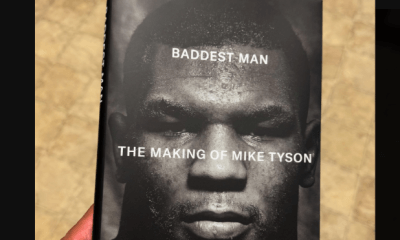
 Book Review4 weeks ago
Book Review4 weeks agoMark Kriegel’s New Book About Mike Tyson is a Must-Read
-
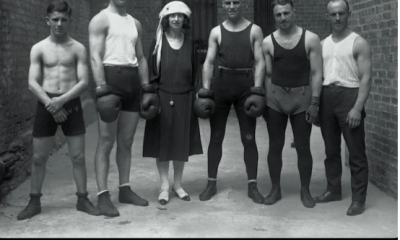
 Featured Articles2 weeks ago
Featured Articles2 weeks agoThe Hauser Report: Debunking Two Myths and Other Notes
-
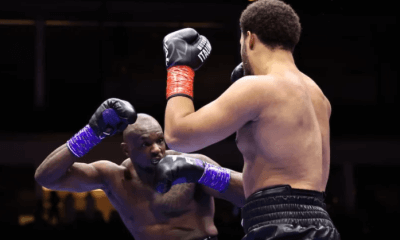
 Featured Articles3 weeks ago
Featured Articles3 weeks agoMoses Itauma Continues his Rapid Rise; Steamrolls Dillian Whyte in Riyadh
-
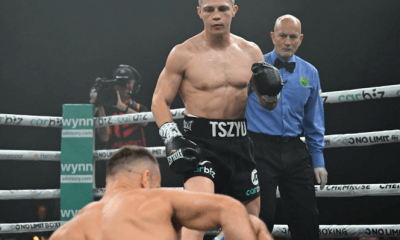
 Featured Articles3 weeks ago
Featured Articles3 weeks agoNikita Tszyu and Australia’s Short-Lived Boxing Renaissance
-
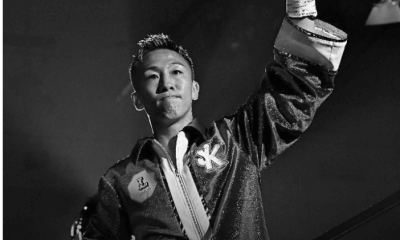
 Featured Articles4 weeks ago
Featured Articles4 weeks agoKotari and Urakawa – Two Fatalities on the Same Card in Japan: Boxing’s Darkest Day
-
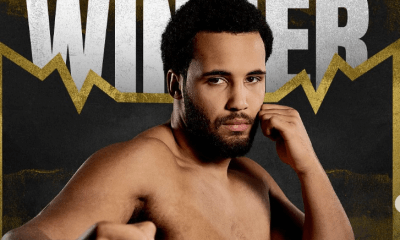
 Featured Articles3 weeks ago
Featured Articles3 weeks agoIs Moses Itauma the Next Mike Tyson?
-
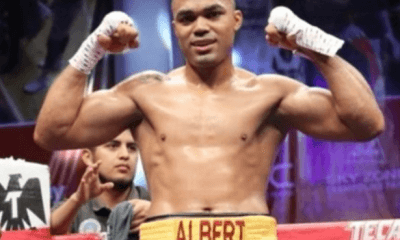
 Featured Articles4 weeks ago
Featured Articles4 weeks agoRamirez and Cuello Score KOs in Libya; Fonseca Upsets Oumiha
-

 Featured Articles2 weeks ago
Featured Articles2 weeks agoBoxing Odds and Ends: Paul vs ‘Tank,’ Big Trouble for Marselles Brown and More















